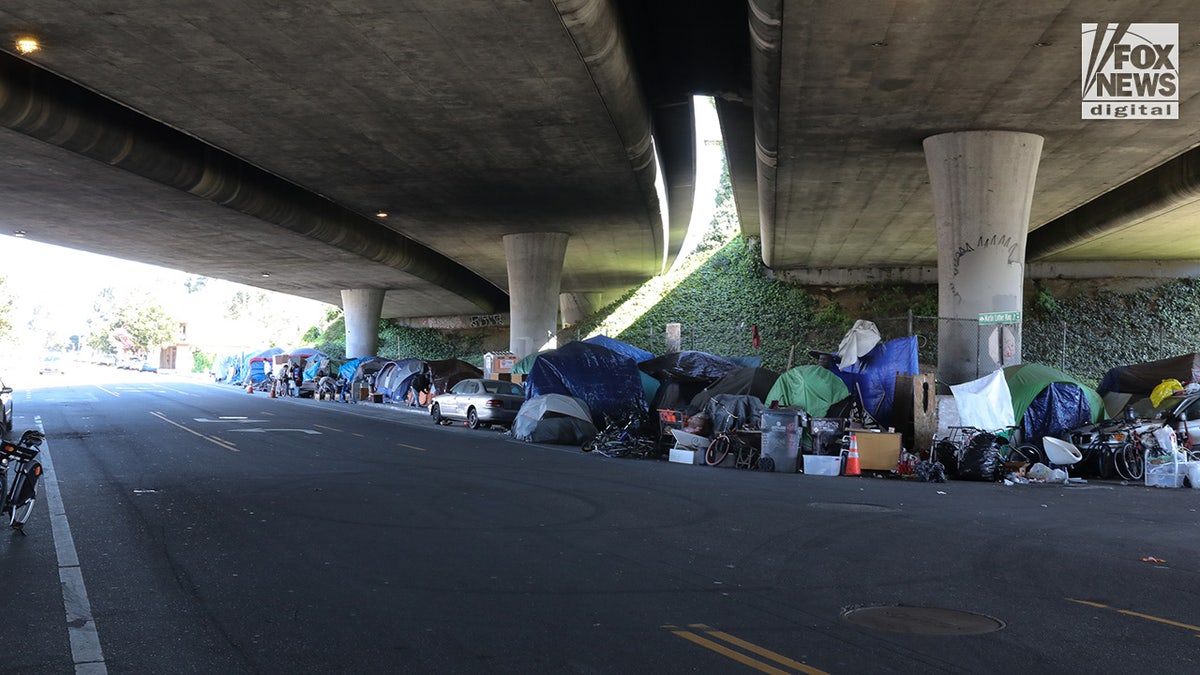There's a 'lack of oversight' over California's homelessness spending: Steve Garvey
U.S. Senate candidate Steve Garvey, R-Calif., weighs in on California's homelessness crisis and its spending to address the problem.
On Monday, April 22, the Supreme Court will hear arguments in City of Grants Pass v. Johnson. The question before the justices is: did the Ninth Circuit correctly hold that the Eighth Amendment prevents cities from enforcing civil or criminal restrictions on the homeless sleeping or camping on public property? Underlying the specific legal question in the case is a larger social question: How did our country get to where hundreds of thousands are homeless?
Reasonable people agree that the homeless crisis presents a serious public policy problem. Growing homeless populations encroaching on public and private property and the resulting conflicts among people who use or own those spaces have forced the nation and the courts, like the Ninth Circuit here, to grapple with the problem. But the solution won’t be found in the courts. Courts can’t build housing. And more affordable housing will solve the homeless crisis.
Many believe that it’s entirely mental illness and drug use that drive the homeless crisis. Those problems contribute to its rise. However, nonpartisan research led by Alex Horowitz at Pew confirms that attributing the growth in homelessness primarily to drug addiction or mental illness underappreciates the role of housing shortages. As Horowitz and his fellow researchers explain:
LA MAYOR PLEADS FOR WEALTHY TO HELP BUY HOUSING FOR THE HOMELESS: 'UNPRECEDENTED PARTNERSHIP'
"A large body of academic research has consistently found that homelessness in an area is driven by housing costs, whether expressed in terms of rents, rent-to-income ratios, price-to-income ratios, or home prices. ... [H]ousing costs explain far more of the difference in rates of homelessness than variables such as substance use disorder, mental health, weather, the strength of the social safety net, poverty, or economic conditions."

Homeless encampments line the streets in Oakland, California on Friday, March 15, 2024. The city remains plagued by homelessness as nearby businesses close their doors due to safety concerns. (DWS for Fox News Digital)
That the homeless problem has worsened over the last several decades cannot be denied. Homelessness has existed in the country at least since the mid-1800s, but before the 1970s, homelessness generally ebbed and flowed with the economy.
However, by 1984, federal officials estimated the number of homeless in the country to be between 250,000 and 350,000. Fast forward 40 years: last year, the federal government estimated the number of Americans without a place to stay for the night had doubled from that 1984 estimate.
While the number of homeless began increasing in the ’70s, so did the country’s restrictions on land use. The massive growth in homelessness has paralleled growth in the number, complexity, and expense of land use regulations. Pervasive and increasingly restrictive land use laws are the principal cause of housing shortages throughout the country at all price points.
Restrictions on building housing, especially lower-cost housing, have often come in the guise of zoning reform. Local and state officials regulate how we use our property through land use codes that apply to nearly all populated areas throughout the country. And other invidious ways to regulate the use of land developed or accelerated in the 1970s as well.
In coastal zones with the most acute housing shortages, permitting schemes drove up the cost of new homes and tested the bounds of the constitution. That phenomenon continues today, with the Supreme Court unanimously deciding earlier this month in Pacific Legal Foundation’s Sheetz v. County of El Dorado case that legislatively imposed permitting fees on land use must both relate to the purported reason justifying the permit and be proportional to the impact of the planned land use.
State planners set out how local officials may restrict the private use of land, and most communities of even modest size have enacted complicated and restrictive expensive land use schemes regulating which parcels may contain housing and what type.
Moreover, the federal government began overreaching its regulatory authority and steadily impairing the right to use property in a non-nuisance manner, including for housing, in the 1970s as well. It did this under the guise of environmental protection laws born in the ’70s, like the Endangered Species Act and the Clean Water Act.
Thus, government "gatekeepers" at all levels decide where and how we can live, work, and recreate. As Richard D. Kahlenberg, in his new book "Excluded: How Snob Zoning, Nimbyism, and Class Bias Build the Walls We Don’t See," persuasively explains: "Government gatekeepers ... dictate which buildings can be built and how they should look, which in turn determines who can live where."

Early in the morning at the intersection of Jones and Turk Streets Urban Alchemys Danielle LeBlue calls the police when a homeless person still remains asleep as the sidewalks are cleaned in the Tenderloin neighborhood of San Francisco, California Wednesday January 26, 2022. (Getty Images)
Our era of pervasive and highly restrictive land use has created housing shortages, particularly at the lower end of the market, where we might expect the homeless to find housing. How do heavy-handed government land use regulations do that?
By turning our right to use our property into a privilege that the government may or may not bestow. The country has all but ceded the right to use one’s property to government land use planners, and one consequence of this decades-long error is plain to see in this case.
CLICK HERE FOR MORE FOX NEWS OPINION
Although the Biden administration should be commended for finally recognizing that the cost of housing must come down by increasing its supply, its 1960s-style big government solution to the problem — throwing money at it — won’t work.
No. Instead, to increase the affordable housing supply for all, including the homeless, land use regulations should be drastically simplified where they cannot reasonably be eliminated. Or put another way, we can address the homeless crisis by taking away from the government planners.
Restrictions on building housing, especially lower-cost housing, have often come in the guise of zoning reform. Local and state officials regulate how we use our property through land use codes that apply to nearly all populated areas throughout the country. And other invidious ways to regulate the use of land developed or accelerated in the 1970s as well.
In doing so, we’ll free Americans to build more housing and put their property to good use more cheaply, free of unreasonable government regulations. These land use regulatory rollbacks must happen at all levels of government, including the federal level.
But that’s not what the Ninth Circuit decided in the Grants Pass case. That Court gave us more government involvement in our lives, not less. The Ninth Circuit’s Grants Pass rule, if adopted by the Supreme Court, would create a new, previously unknown Eighth Amendment right to sleep on public property, which would put costly new demands and responsibilities on local and state governments and the public purse.
CLICK HERE TO GET THE FOX NEWS APP
That mistake would put even more power into the hands of government planners. That is exactly the wrong road for the court to take.
Bad land use planning policy has driven up the price of housing to crisis levels, making it unaffordable for too many, including many of the homeless. The road to curing the social ill of homelessness runs through the ingenuity of entrepreneurs and the market in providing low-cost housing. That will happen only if government land use planners get out of the way.


